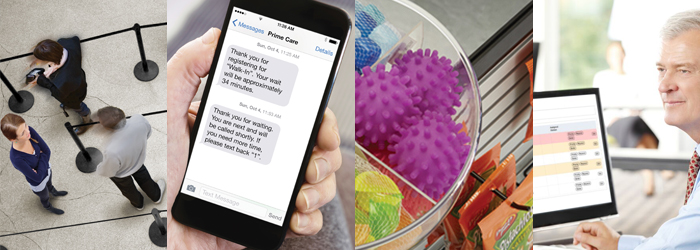Reneging is defined as “[going] back on a promise or commitment.” In retail reneging happens when customers decide they no longer want to purchase an item. Sometimes this happens before a customer enters the queue and sometimes the customer abandons the queue. Take a look at these 5 reasons for reneging and how you can improve your queue management to deter these happenings.
1. Slow and/or socializing service agents
It is one thing for a service agent to be polite to his or her customers asking questions about their in-store experience or how their day is going, but unnecessary chatter after the transaction will cause frustration among the patrons still waiting in line.
Additionally, socializing amongst co-workers can be seen as especially unproductive to waiting customers. Keep your employees focused on the customers and within specific target time frames for completing transactions.
2. Closed transaction points during busy times
Use real-time queue monitoring techniques to help distinguish when you need to add or subtract service agents. During peak business hours customers want to see you making every effort to keep the lines moving quickly and to them that includes seeing every service option available and open for service.
Careful queue monitoring will keep you from over or under staffing during various times of the day, month or year and therefore keep your process streamlined and within budget.
3. Waiting 2-3 minutes without any forward progress
Various studies have shown that customers are only willing to wait two to three minutes at a standstill before giving up on the transaction. If customers do not see progress, the line starts to feel indefinite and they begin questioning how long they will be waiting and if their purchase is worth waiting for.
Besides keeping your line progressing forward, keep patrons informed of expected wait times. This courtesy will help ease their minds and anxieties.
4. Choosing the wrong line
When customers are faced with having to make a choice about which line to wait in, stress immediately takes over their systems. What if they choose the “wrong” line and end up waiting six minutes instead of one minute? Anxiety is created when making the decision and frustration is doubled if they end up waiting longer because of their decision.
Solve this problem with a single line queue setup on the basis of a first come first serve philosophy. Research shows that queue efficiency, customer flow and service time can improve by as much as 30 percent by setting up one line flowing to multiple service agents. Plus customer morale improves because the line will continue to move forward even if one point of transaction gets delayed by price checks or other service issues.
5. Searching for the queue entrance
Your customers will spend a limited amount of time searching for the queue entrance before giving up and leaving potential purchases behind. Those customers that do find the queue may very well be disgruntled from the search and are more likely to ditch the line part way through or if they do complete their transaction they will be more likely to speak negatively about your store to friends, colleagues and family.
Battle reneging by efficiently and effectively managing your queue to decrease wait times and enhance the waiting line experience. If customers see a checkout process that is being actively managed they are more willing to wait and less likely to leave without their desired purchases.










